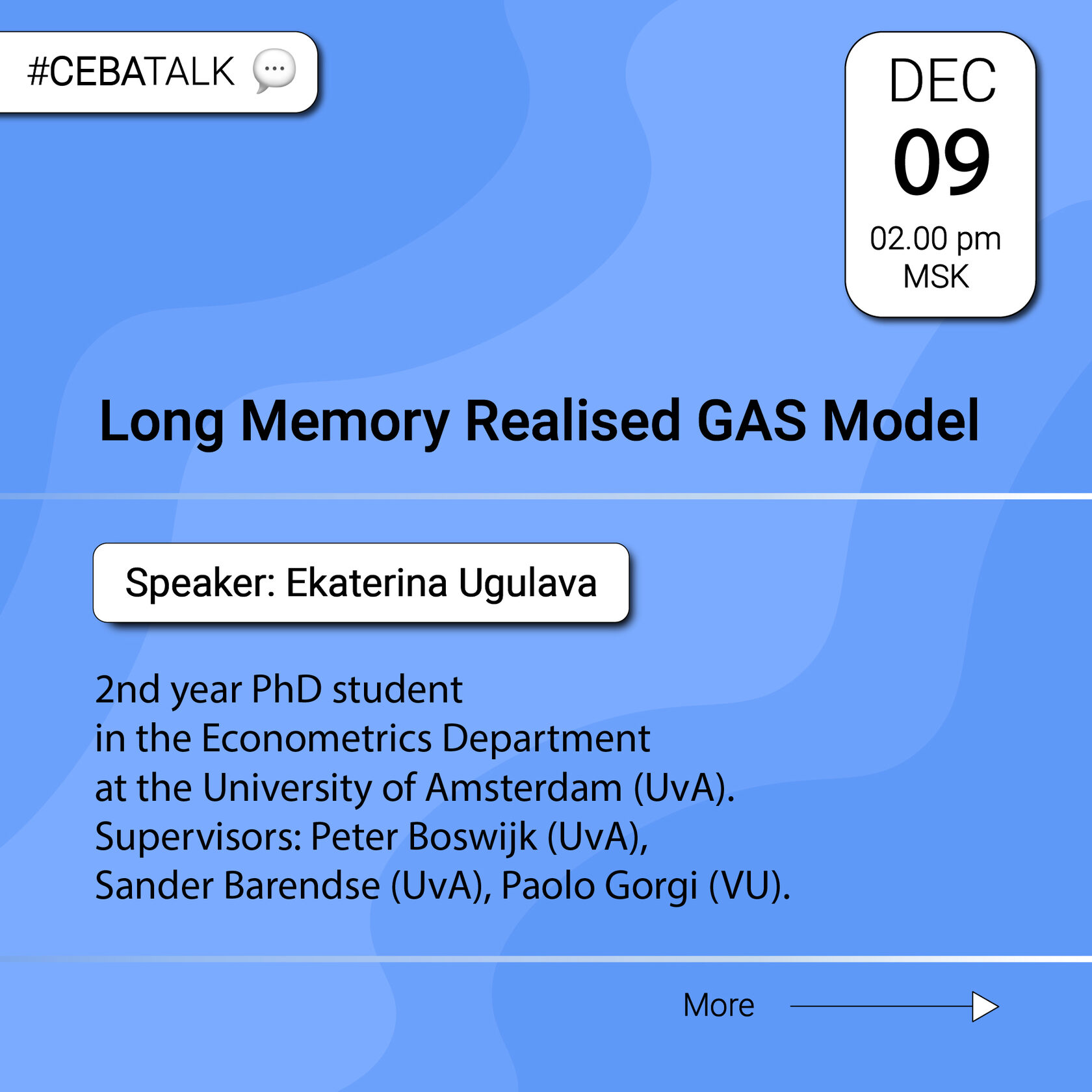Speaker: Ekaterina Ugulava (2nd year PhD student in the Econometrics Department at the University of Amsterdam (UvA). Supervisors: Peter Boswijk (UvA), Sander Barendse (UvA), Paolo Gorgi (VU))
Title: Long Memory Realised GAS Model
Field of study
"Volatility modelling of financial time series."
What problem is your research intended to solve?
"A common finding in literature is that squared returns (proxy for volatility) are subject to long memory behaviour meaning that the dependence between the two points in time does not decay quickly. As a result, accounting for long memory dynamics in the model sets promising results for relatively long horizons volatility forecasts. Producing high-quality measurements of multi-period volatility is particularly important for various financial applications, such as investment allocations, portfolio risk measurement, and asset pricing. In our research we investigate whether the new model is indeed promising in terms of its forecasting ability."
What did your research find?
"Contrary to the research on long memory, we do not restrict the dynamics of the volatility process to be stationary. Empirically, we find that data favors non-stationary dynamics in the volatility process. Hence, our work provides the preliminary evidence which may inspire further theoretical developments in the context on non-stationary long memory processes."
Abstract: We introduce a new univariate score-driven model which explicitly incorporates long memory dynamics in the conditional variance of daily returns. First, we model the conditional variance as a fractionally integrated (FI) process, and importantly, allow the long memory parameter to cross the stationarity boundary d=0.5. Second, we adopt a heterogeneous autoregressive (HAR) model that parsimoniously approximates long memory dynamics through mixed-frequency mean components. The new model accommodates heavy-tailed densities for both the daily returns and realised measures. This choice of observational densities ensures an automatic correction for the influential observations through the score. In an empirical study conducted for fifteen individual components of the DJI index over the period 2001-2010, we find that likelihood favours the new FI model with d>0.5. Our out-of-sample analysis identifies that accounting for long memory through either the FI or the HAR form is particularly useful for volatility level evaluation and return risk assessment during non-crisis periods.
More information, a link to the research and the upcoming seminar here.
We are looking forward to seeing you!
